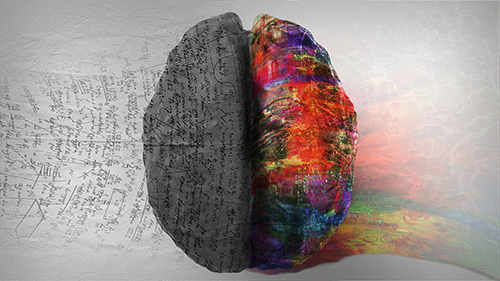The most accurate predictions of intelligence consider global profiles of whole-brain connectivity rather than spatially localized regional networks, claims a predictive modeling study based on fMRI and cognitive tests that aimed to evaluate the effectiveness of various neuroscientific theories of human intelligence.
The study, conducted on nearly 300 healthy young participants, was led by Evan Anderson, PhD, a former graduate student in the decision laboratory at the University of Illinois at Urbana-Champaign, and who is now a researcher at Ball Aerospace and Technologies, and Aron Barbey, PhD, the director of the decision laboratory and a professor of psychology, neuroscience, and bioengineering at the University of Illinois at Urbana-Champaign. The findings were published in the journal Human Brain Mapping (“Investigating cognitive neuroscience theories of human intelligence: A connectome-based predictive modeling approach”).
“Rather than originate from a specific region or network, intelligence appears to emerge from the global architecture of the brain and to reflect the efficiency and flexibility of systemwide network function,” said Barbey.
An active area of research interest in cognitive neuroscience and psychology seeks to decipher how the structural and functional interconnectivity of neuroanatomical circuits drive an individual’s problem-solving ability in different contexts—a trait known as “general fluid intelligence.” The study compares five theories on how intelligence emerges in the human brain: the lateral prefrontal cortex (PFC) theory, the parieto-frontal integration (P-FIT) theory, the multiple demand (MD) theory, the process overlap theory (POT), and the network neuroscience (NNT) theory.
The central question these theories attempt to solve is whether flexible and efficient information processing required for general intelligence arises from a specific region or structure in the brain (e.g., the lateral PFC), a particular primary brain network (e.g., the frontoparietal network), or a system-wide network. While earlier theories favored individual neuroanatomical structures as the birthplace of intelligence, followed by a shift toward certain neuronal networks, more recent theories examined the overlap and interaction among diverse networks. Barbey and Anderson’s NNT theory posits that intelligence emerges from strong and weak connections in the global brain connectome.
“This study contributes to the important work of testing the distinct predictions of the major neuroscience theories of intelligence,” said Michael Cole, PhD, an associate professor of molecular and behavioral neuroscience at Rutgers University, Newark. “Looking carefully at the results, it appears all the major theories predict intelligence above chance, giving some credence to each of those theories. This sort of ‘many theories are partially correct’ situation is common when testing theories of brain function, likely because the human brain is such a complex system.” (Cole, whose own work has demonstrated the role of the lateral PFC in conjunction with multinetwork connectivity in fluid intelligence, was not part of the current study.)
Cole added, “The authors found that the network neuroscience model had a slight but reliable edge on predicting intelligence. This is most consistent with recent network neuroscience theories of intelligence.”
“Strong connections involve highly connected hubs of information-processing that are established when we learn about the world and become adept at solving familiar problems,” said Anderson. “Weak connections have fewer neural linkages but enable flexibility and adaptive problem-solving.”
“To understand the remarkable cognitive abilities that underlie intelligence, neuroscientists look to their biological foundations in the brain,” said Barbey. “Modern theories attempt to explain how our capacity for problem-solving is enabled by the brain’s information-processing architecture.”
Characterizing individual differences in intelligence on the backdrop of the structure and function of brain networks is key in understanding intelligence, said Anderson.
In the current study, each participant underwent a comprehensive battery of tests to measure problem-solving skills and adaptability in various contexts. These included vocabulary tests, completing a series of figures, applying decision rules, recognizing social norms, and consistency in perceiving risk. Next, the researchers recorded resting-state functional MRI scans from each participant.
“One of the really interesting properties of the human brain is how it embodies a rich constellation of networks that are active even when we are at rest,” said Barbey. “These networks create the biological infrastructure of the mind and are thought to be intrinsic properties of the brain.”
For example, the frontoparietal network enables cognitive control and goal-directed decision-making, while the dorsal attention network generates visual and spatial awareness, and the salience network helps spotlight attention on high-priority events. The activities of such networks in resting but awake individuals are reliable predictors of problem-solving abilities, said Barbey. Armed with data on cognitive tests and fMRI scans, the researchers evaluated which theories best predicted performance on intelligence tests.
“We can systematically investigate how well a theory predicts general intelligence based on the connectivity of brain regions or networks that theory entails,” said Anderson. “This approach allowed us to directly compare evidence for the neuroscience predictions made by current theories.”
When Anderson and Barbey included the whole brain to predict a participant’s problem-solving aptitude and adaptability, they obtained the most accurate predictions. Predictions based on NNT were better than those based on restricted regions or networks.
“The partial success of more localized theories may suggest a hybrid theory may be closest to the truth, in which intelligence is driven by specialized regions of the brain (such as lateral prefrontal cortex) along with the ability of those regions to communicate (directly or indirectly) with the rest of the brain,” said Cole. “This is consistent with global connectivity patterns being important, but with portions of the brain being especially critical in the generation of human intelligence.”
Cole added, “While [the NNT model] seems to push the full understanding of intelligence further into the future, it reveals that this is an especially exciting time for cognitive neuroscience.”
A concrete concept of the biological underpinnings of human intelligence is not merely an academic pursuit. It is critical in identifying skilled problem solvers, in the clinical assessments of cognitive decline with age or injury, and perhaps, in the not-so-distant future, in establishing the unique and idiosyncratic advantages of human intelligence over the artificial kind.



